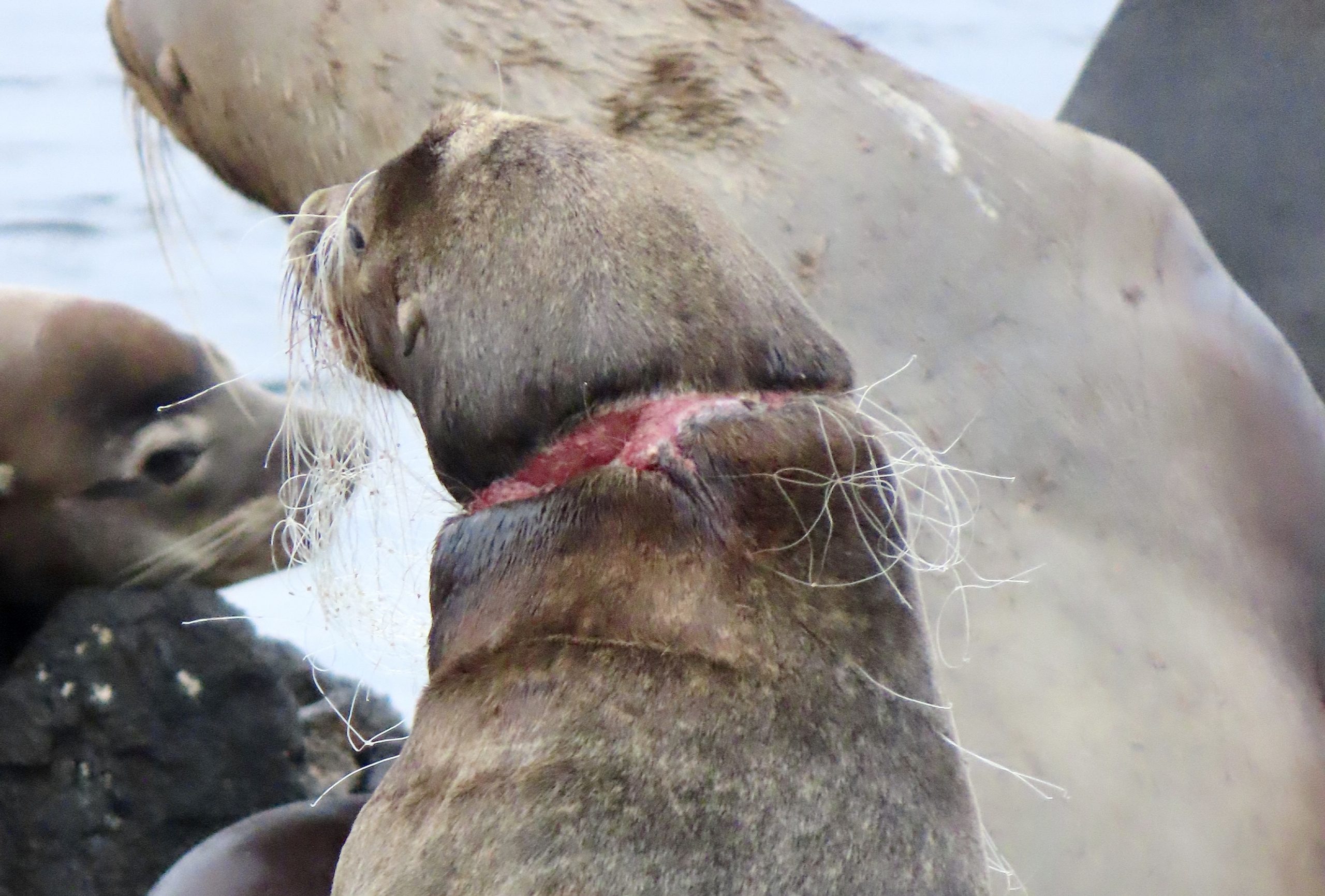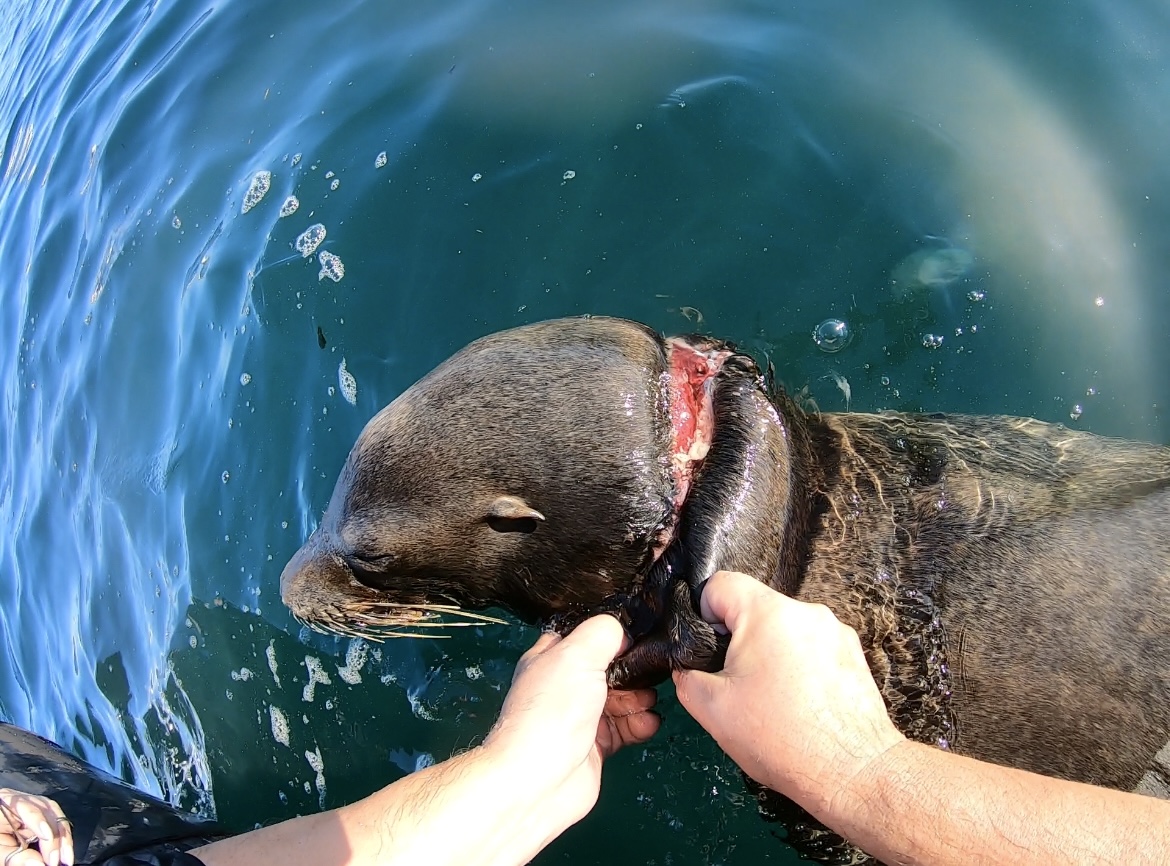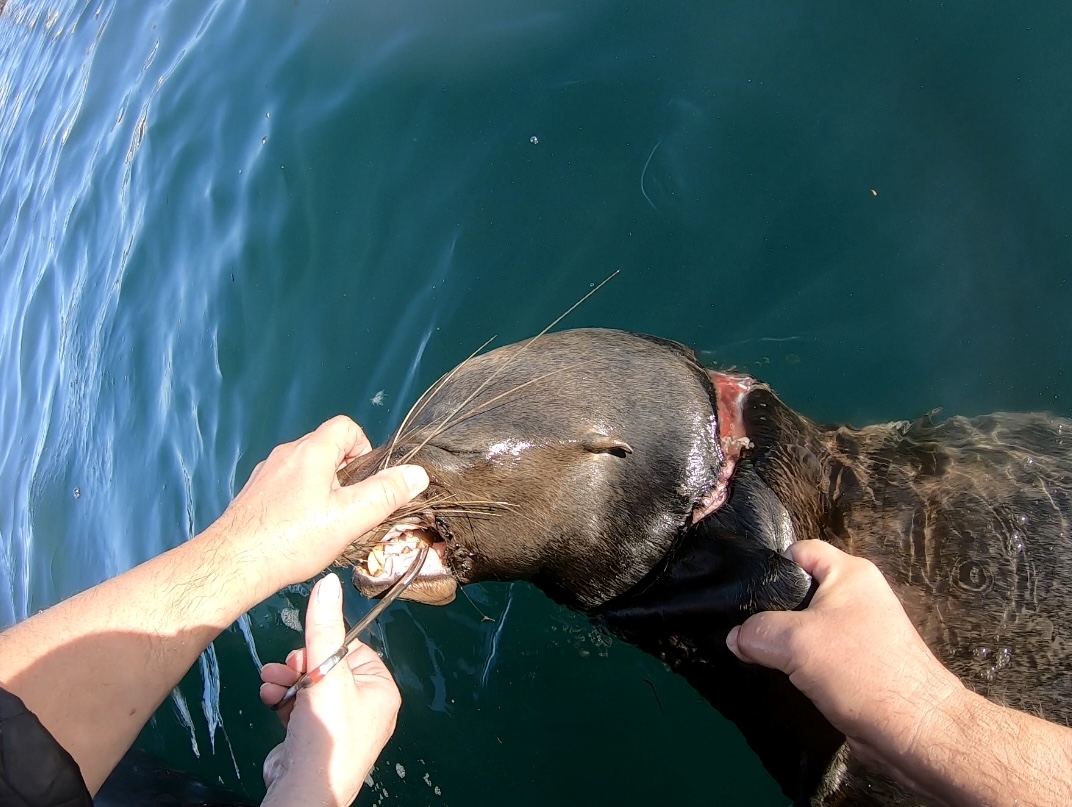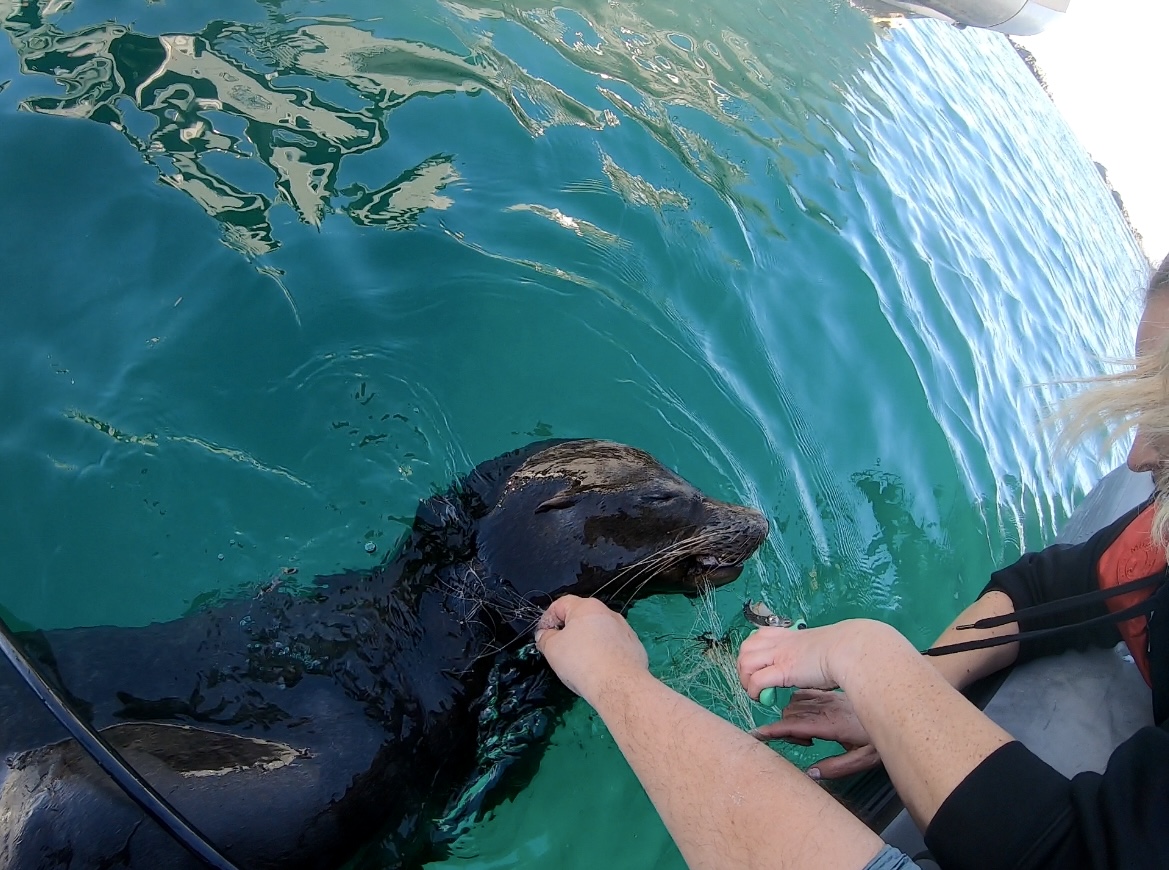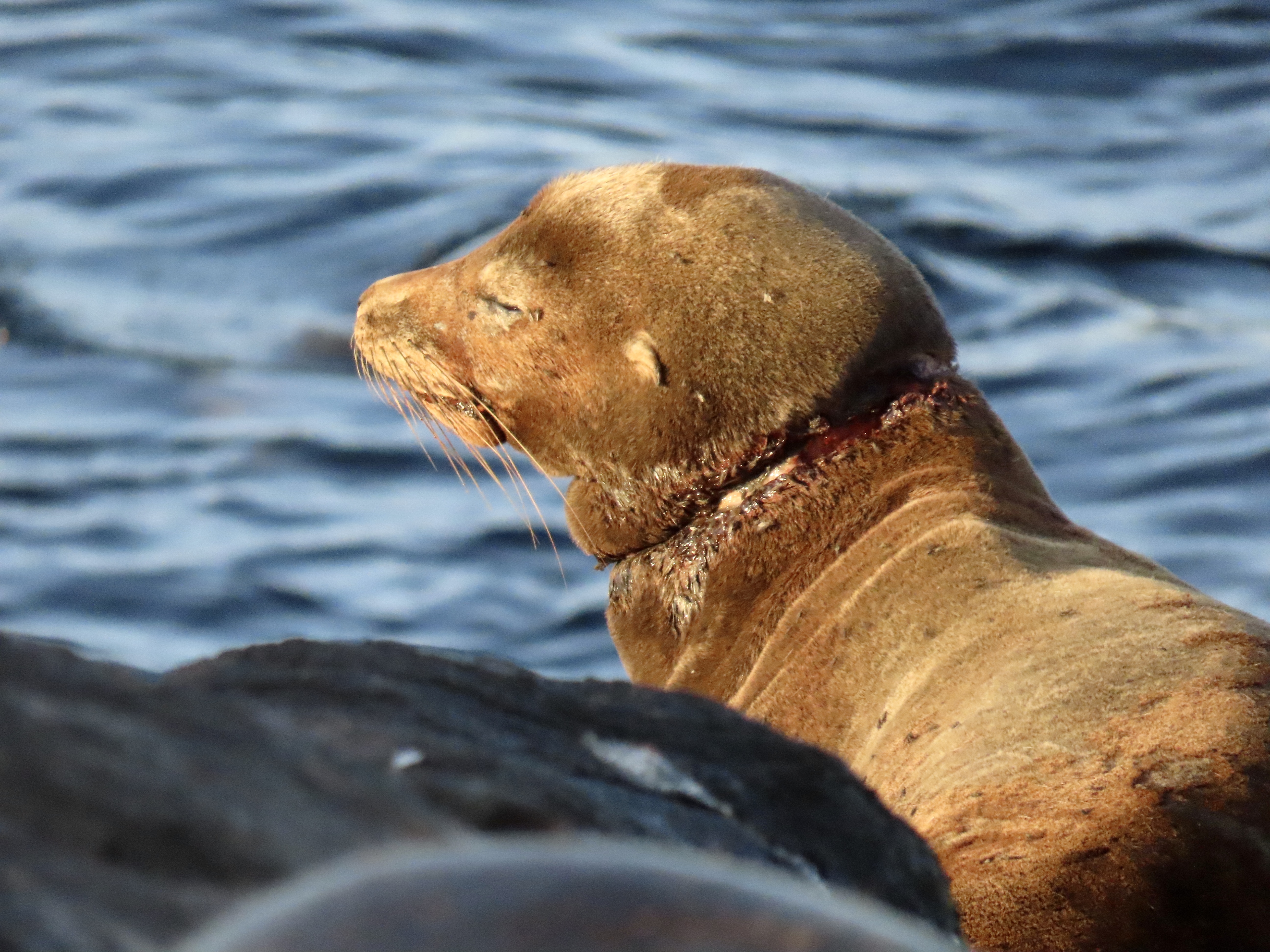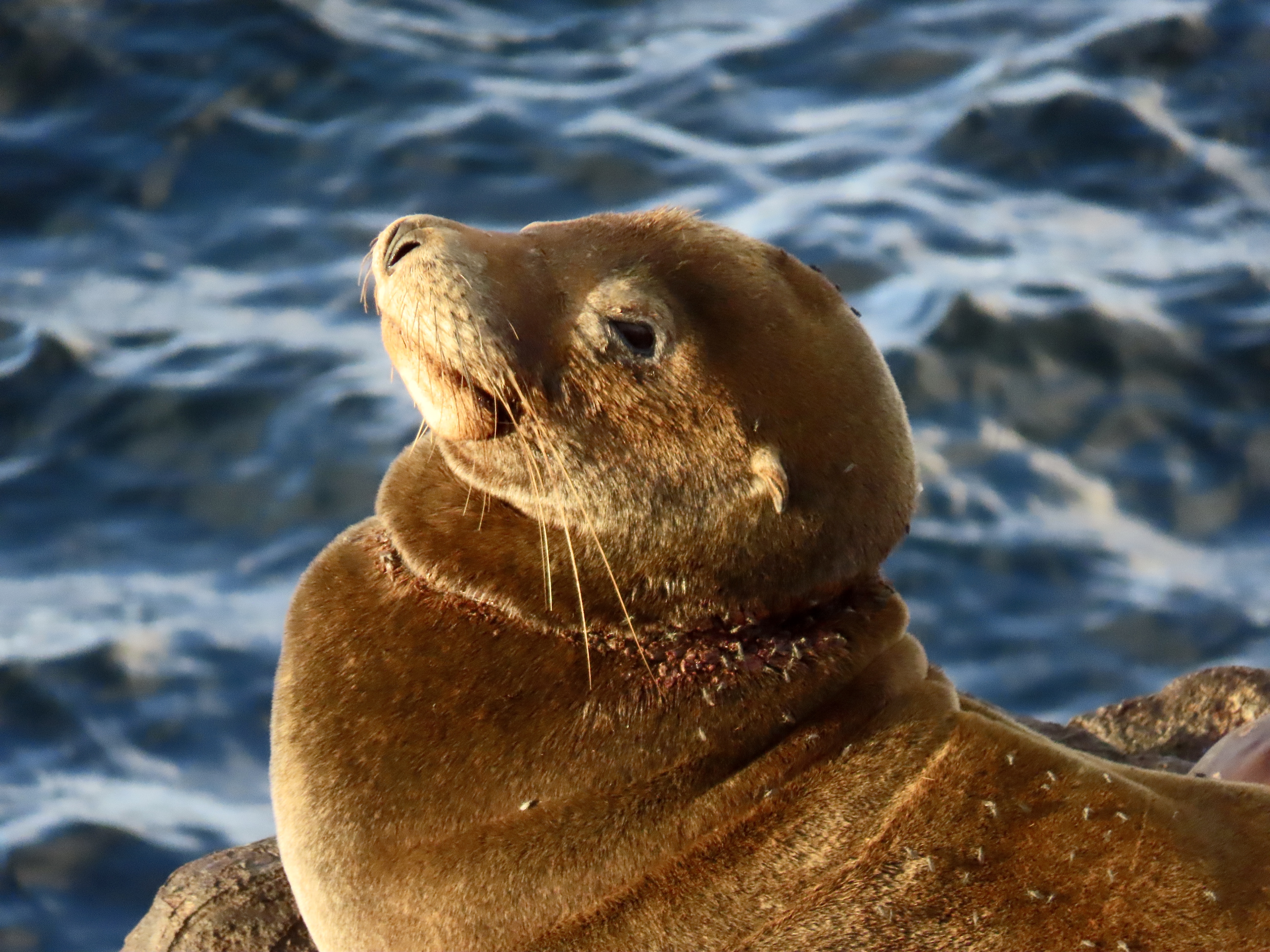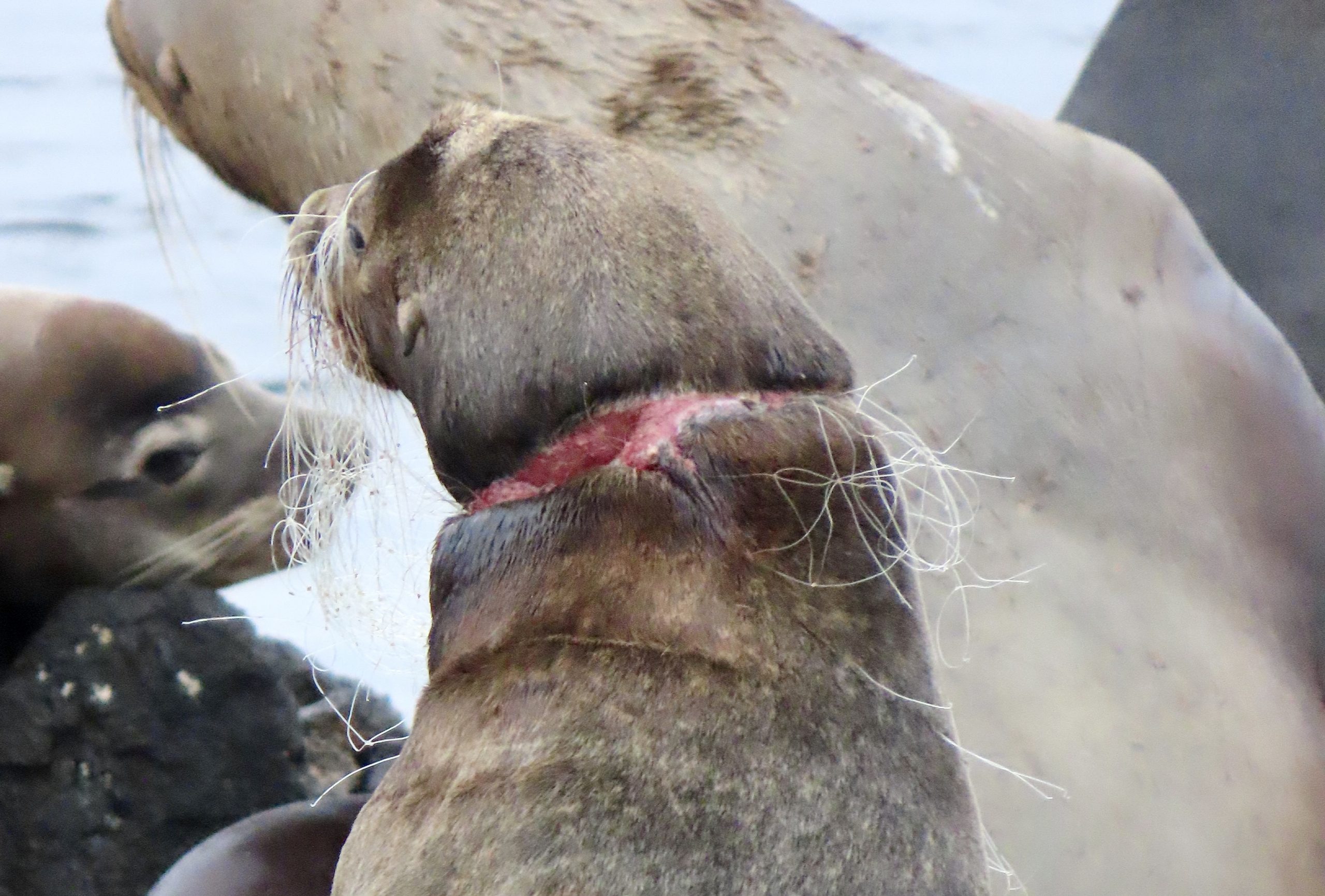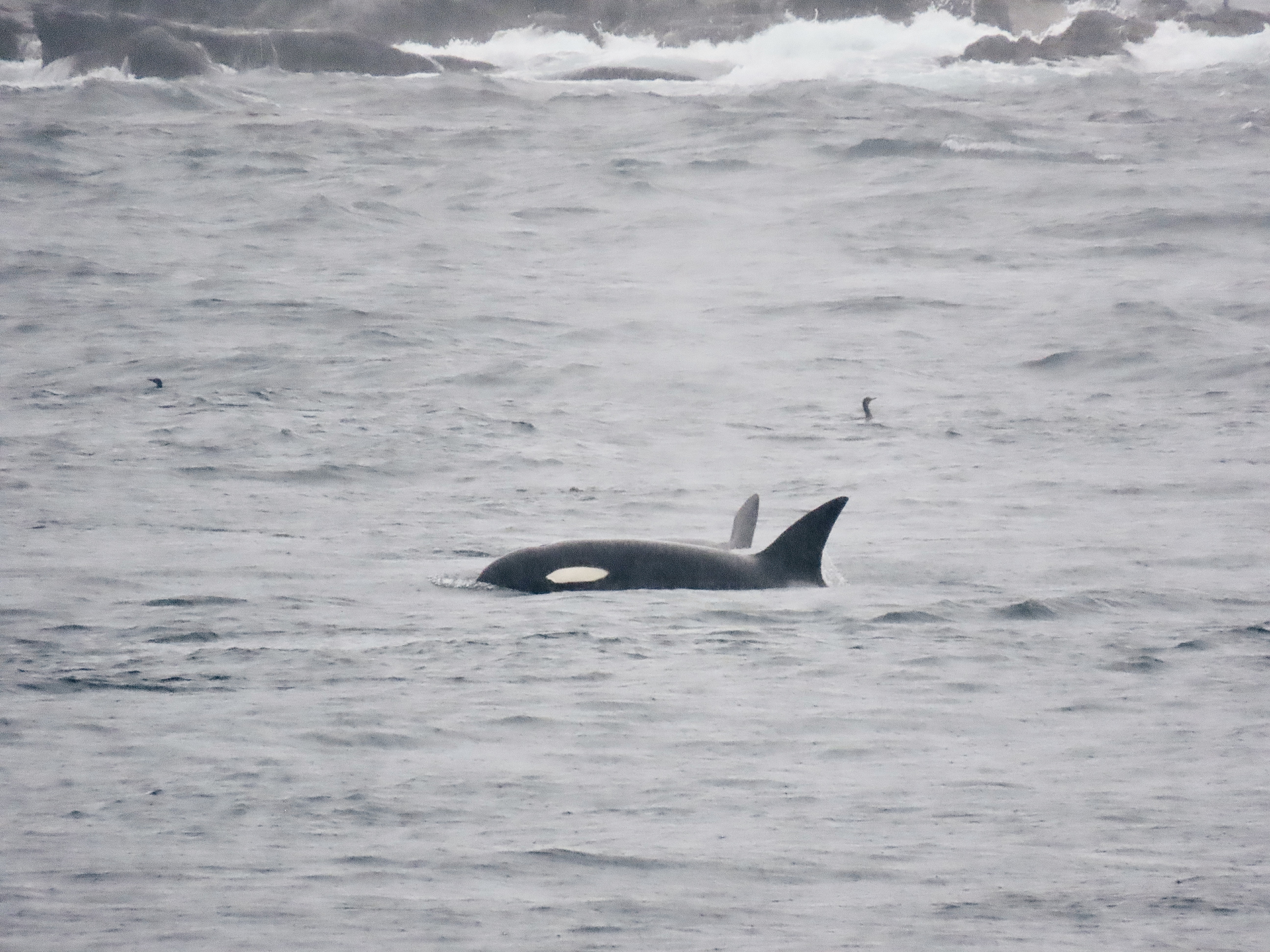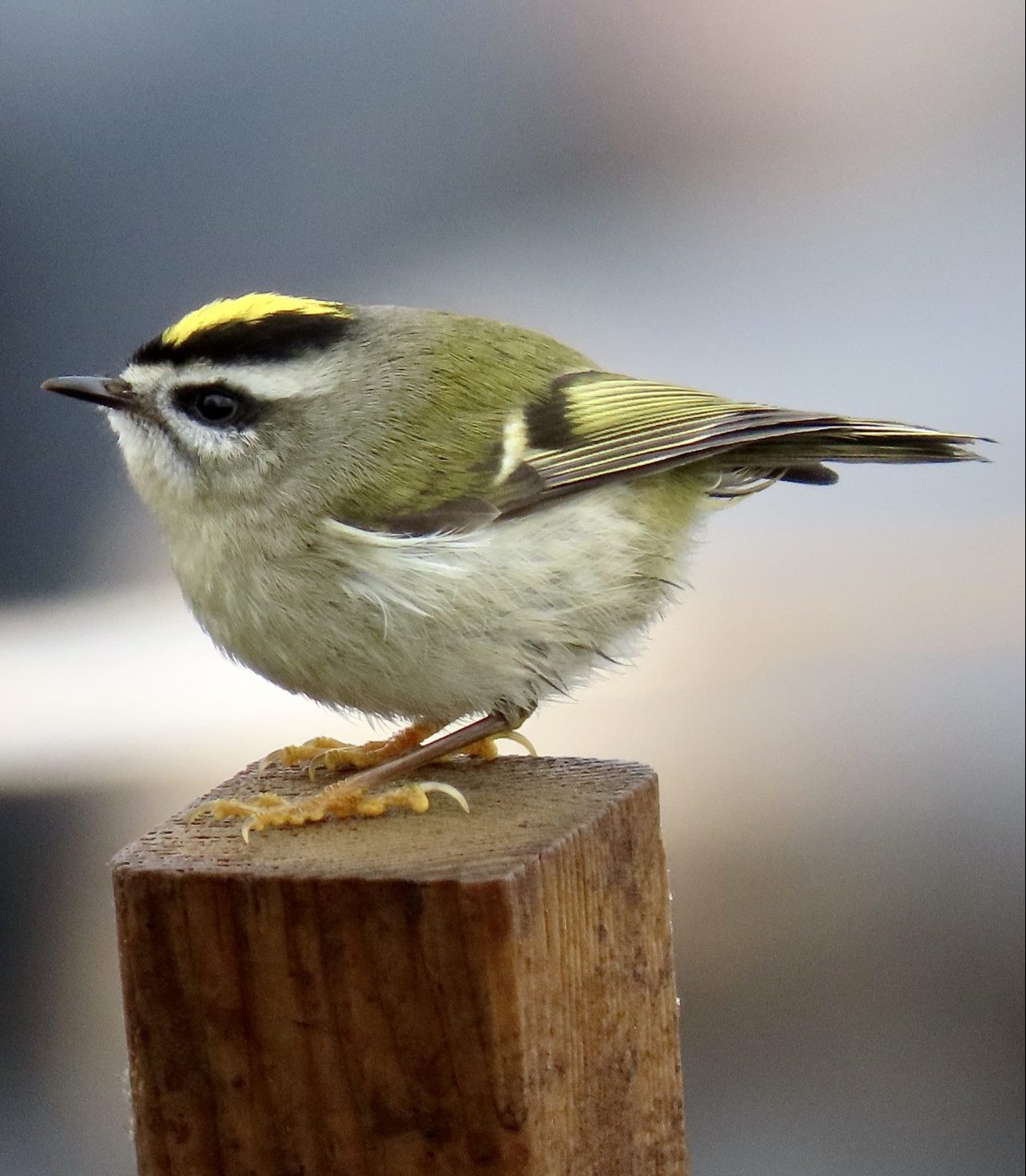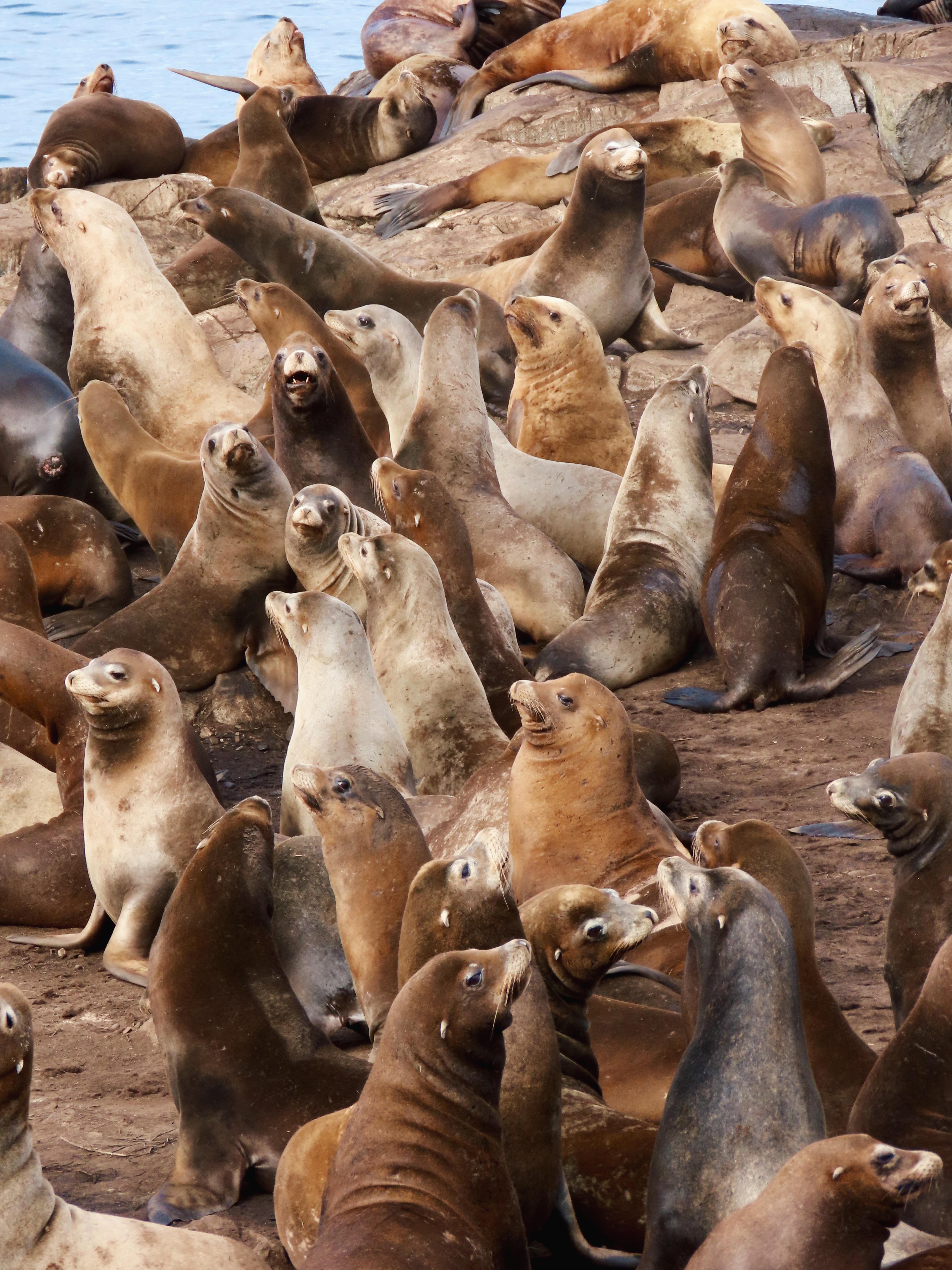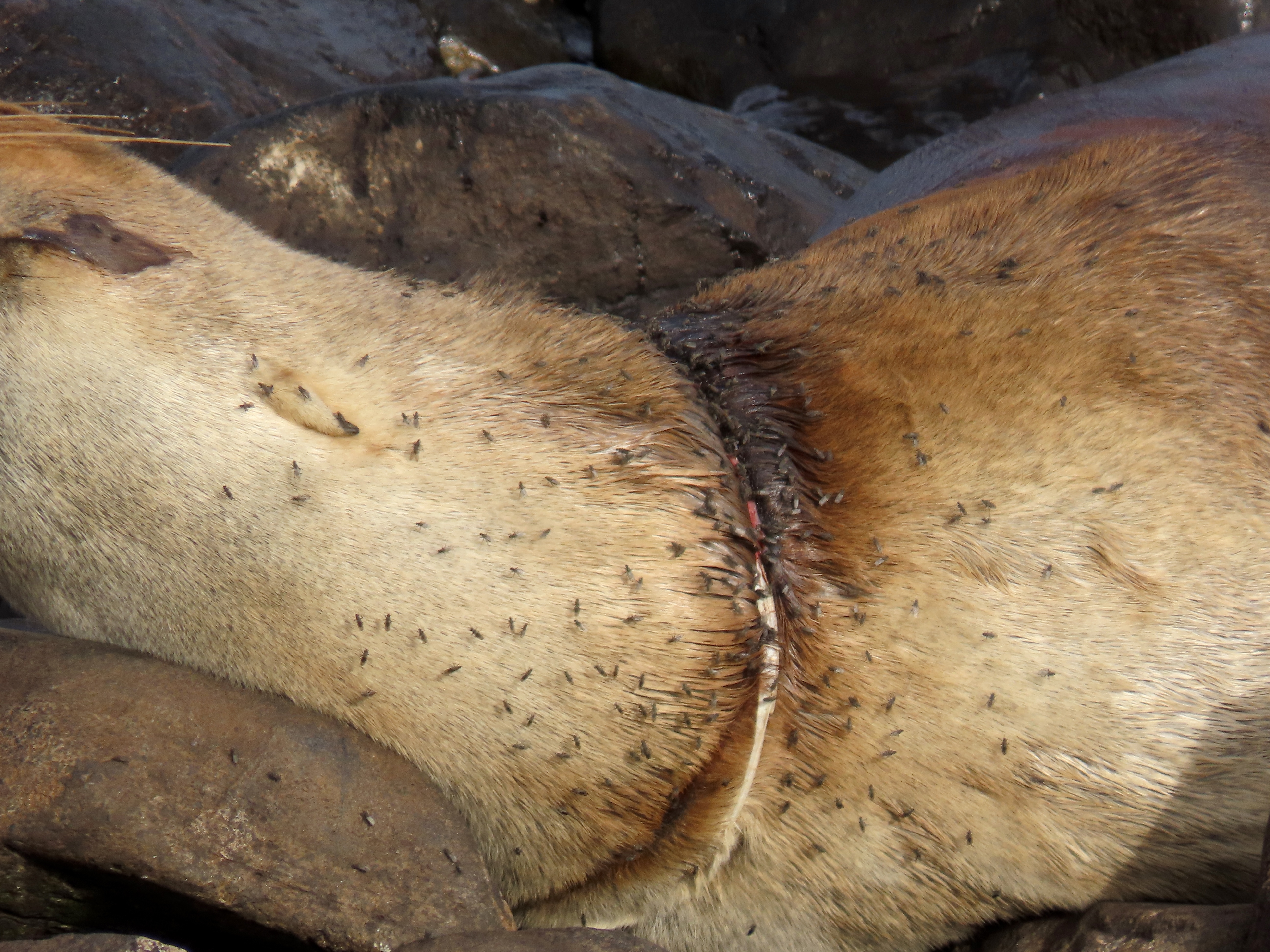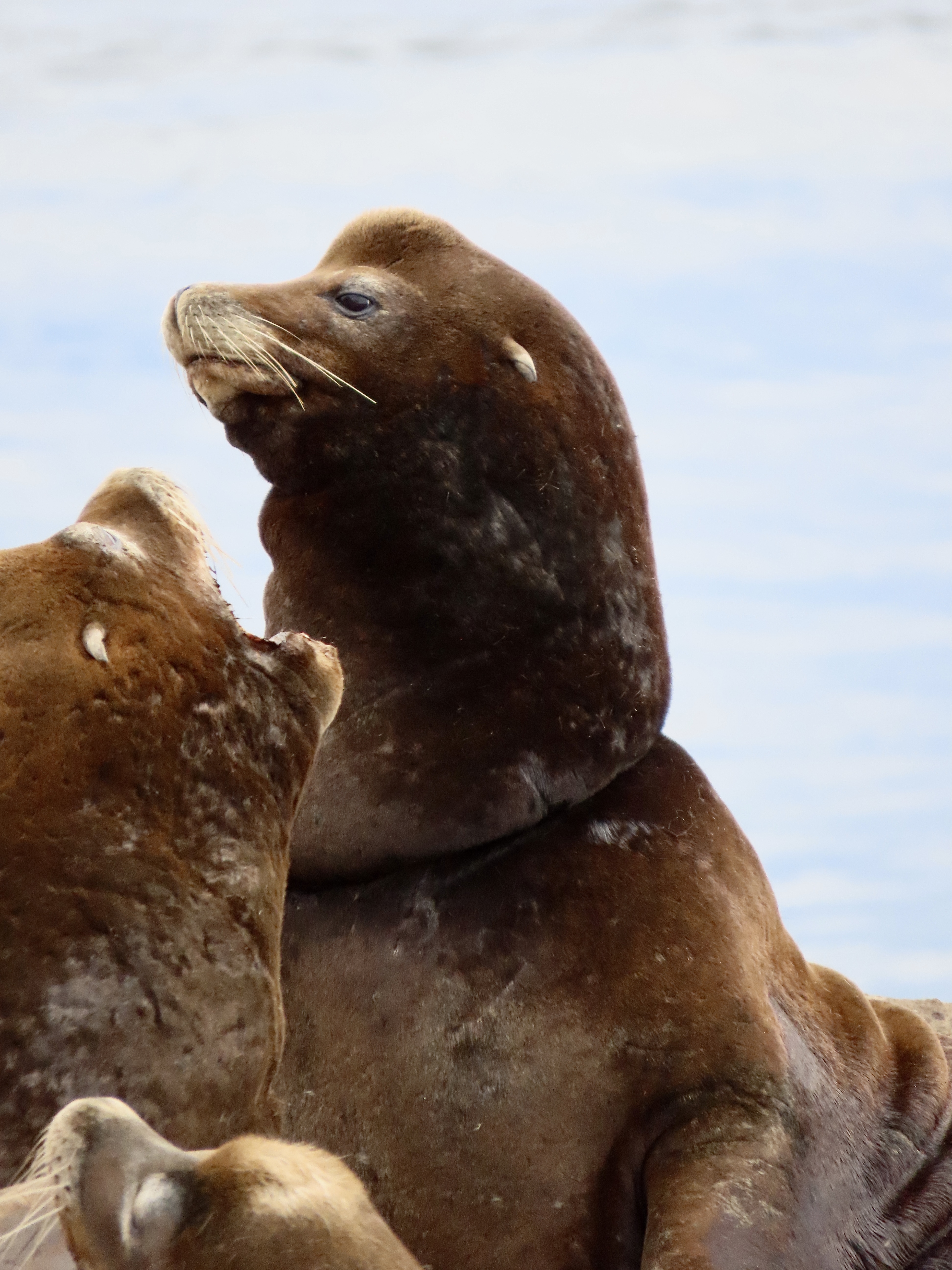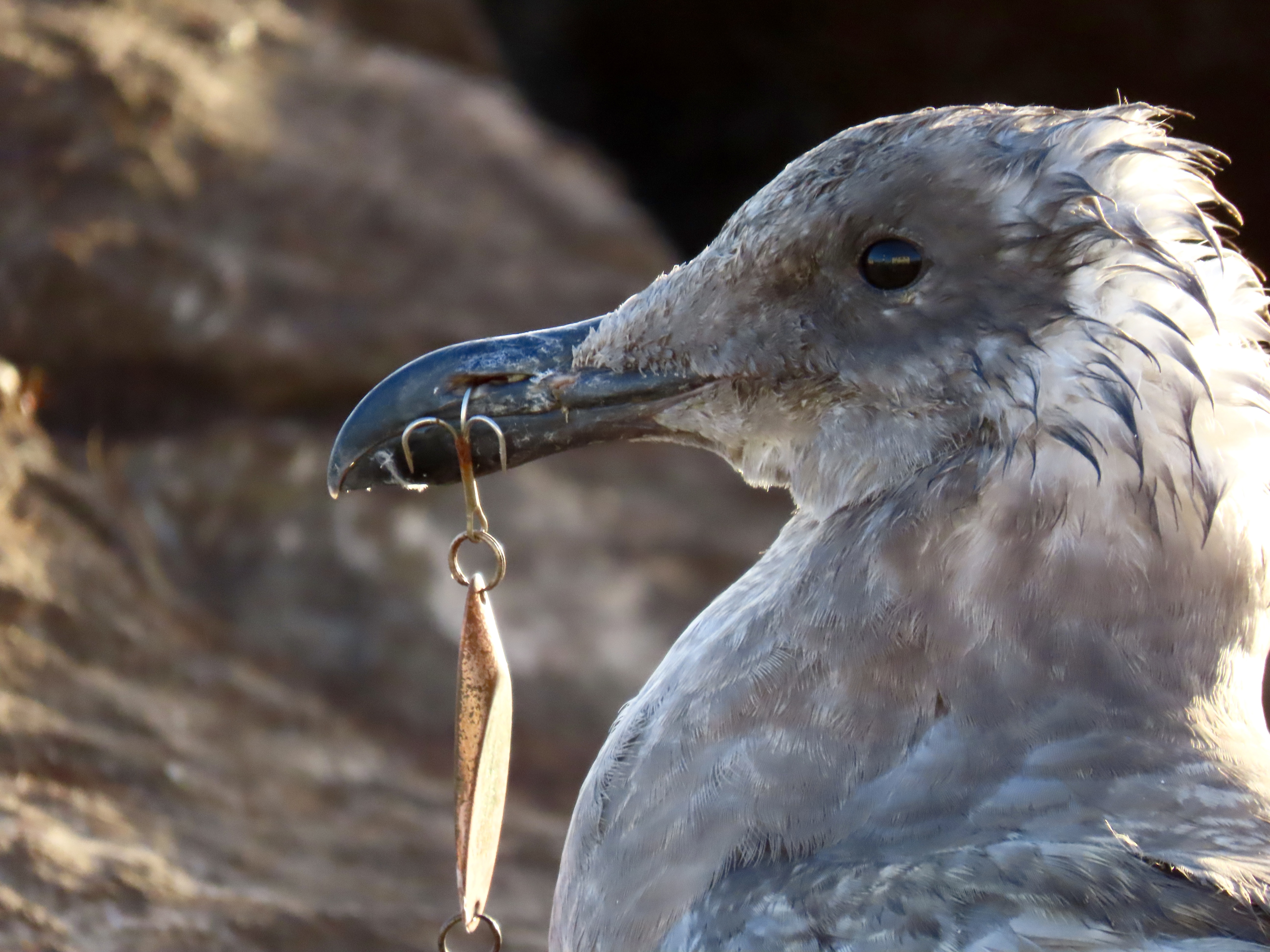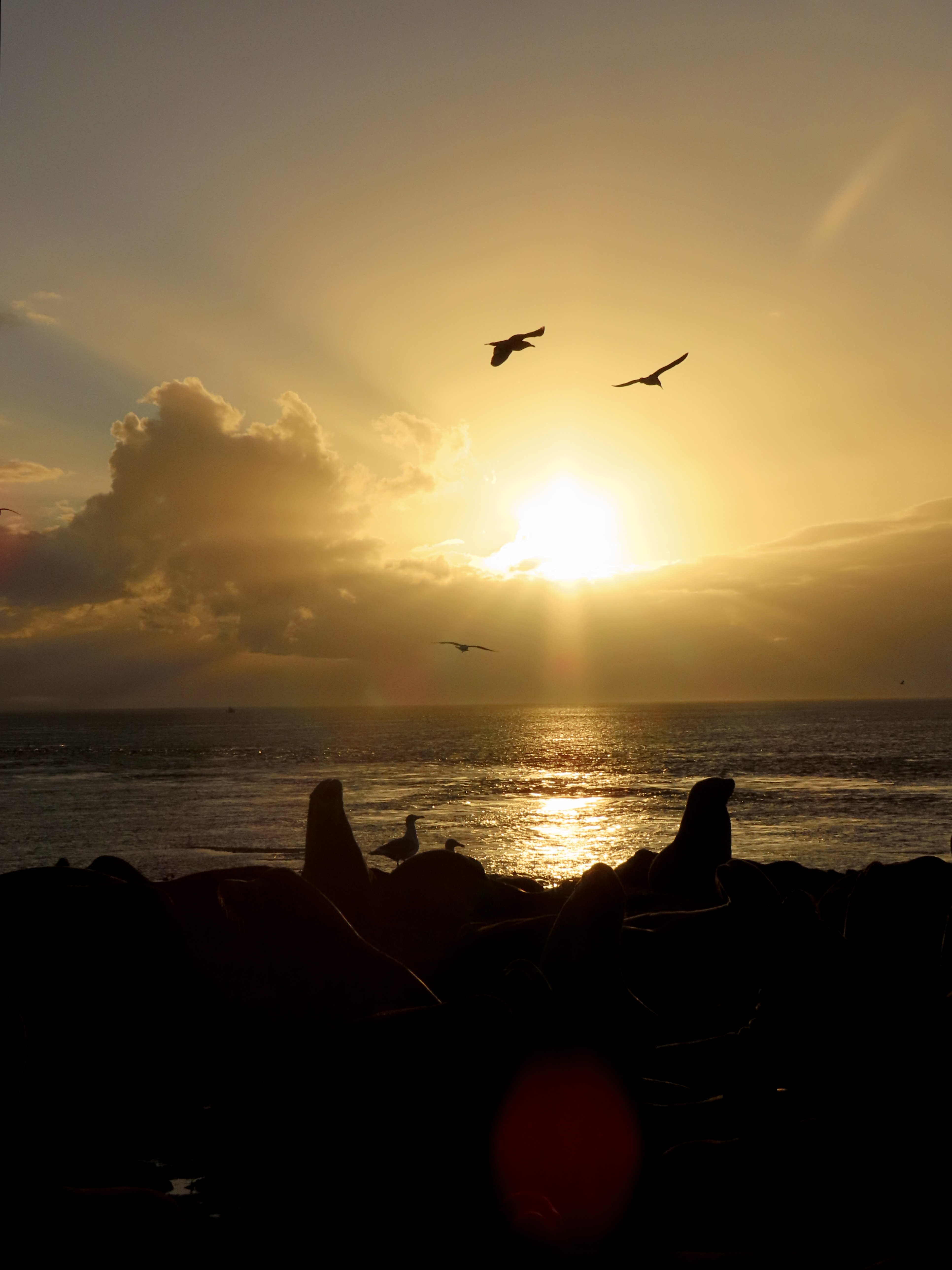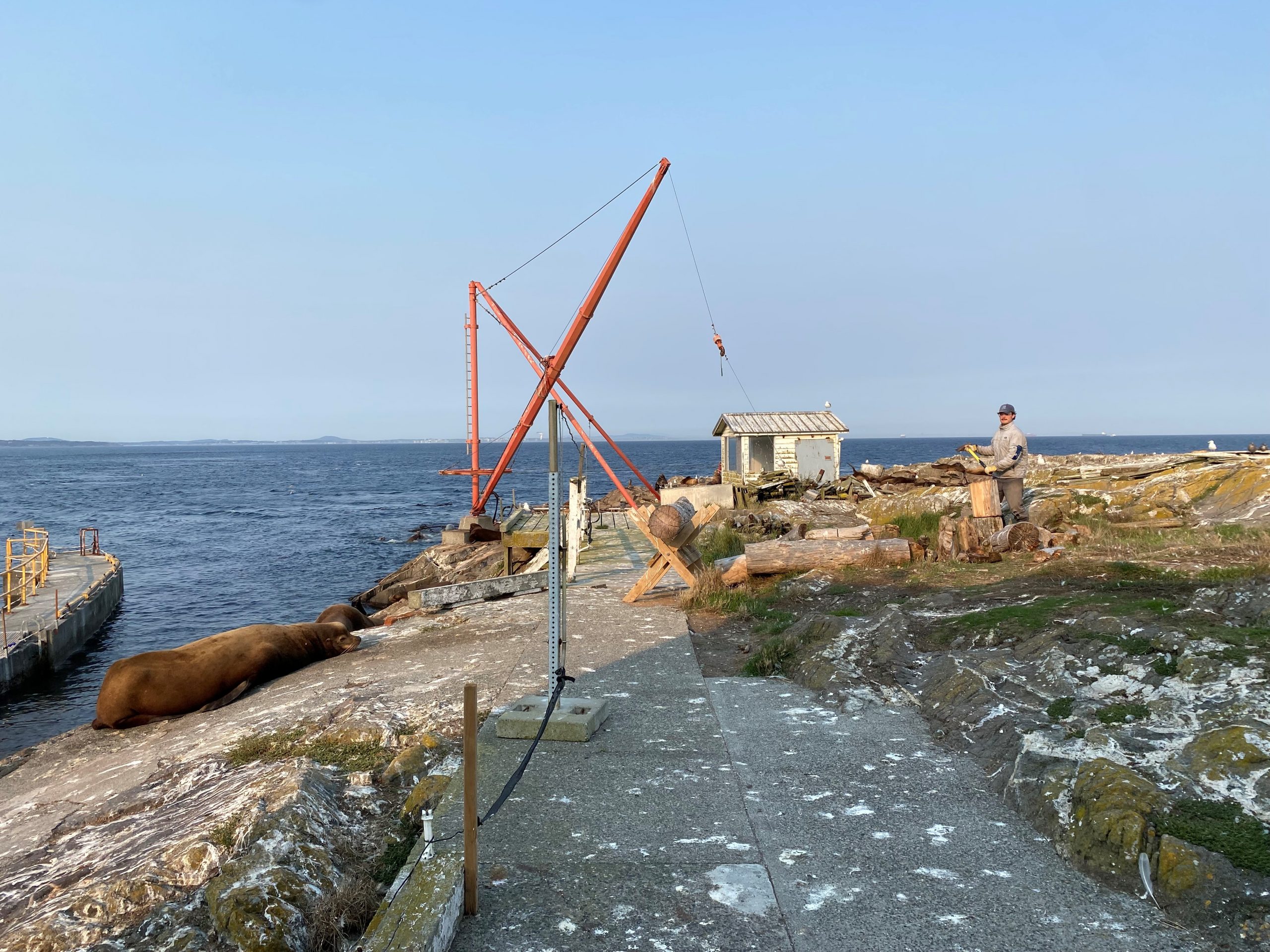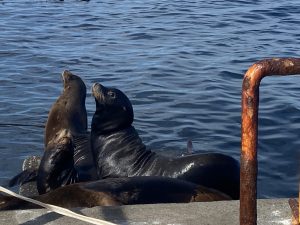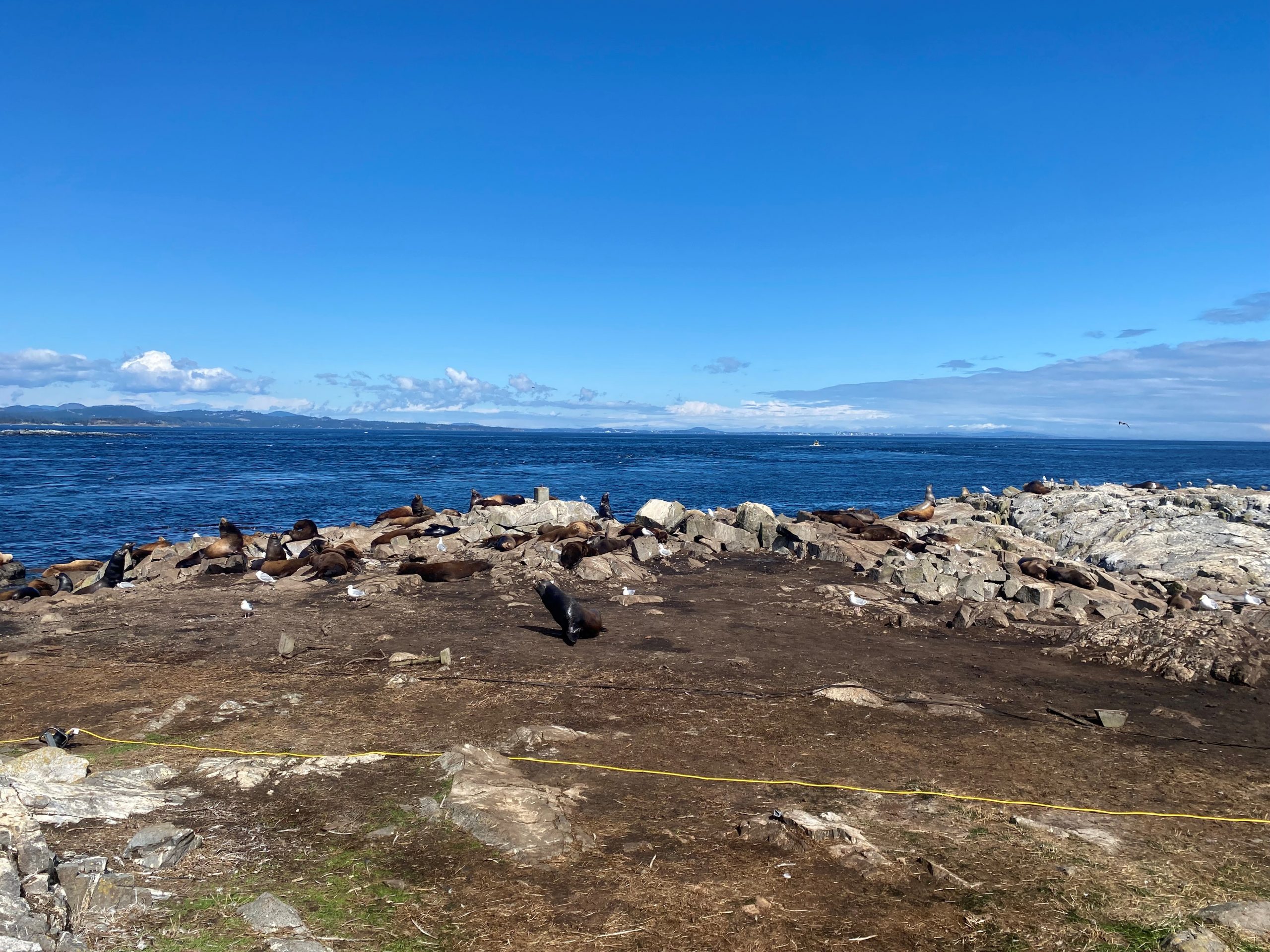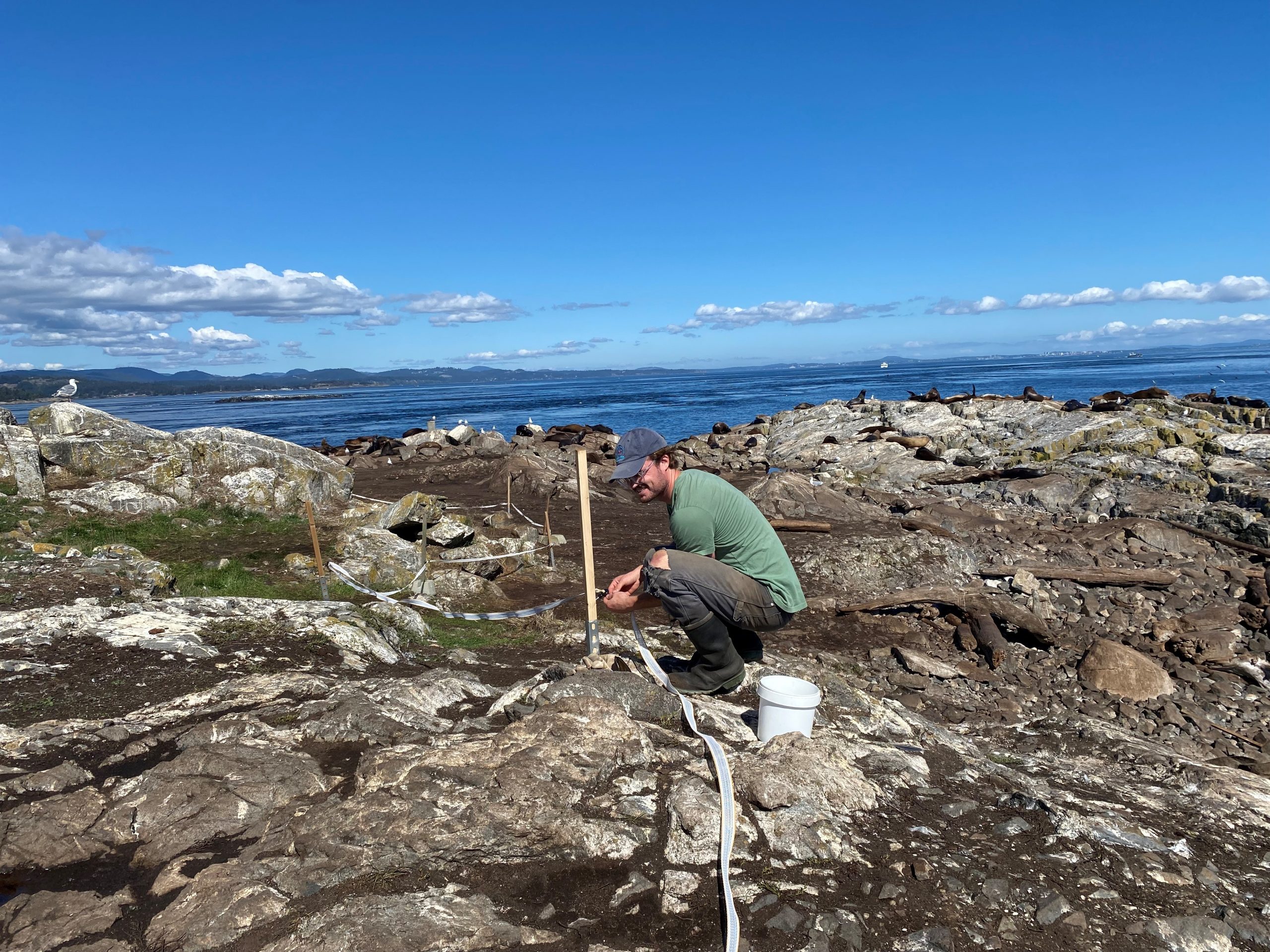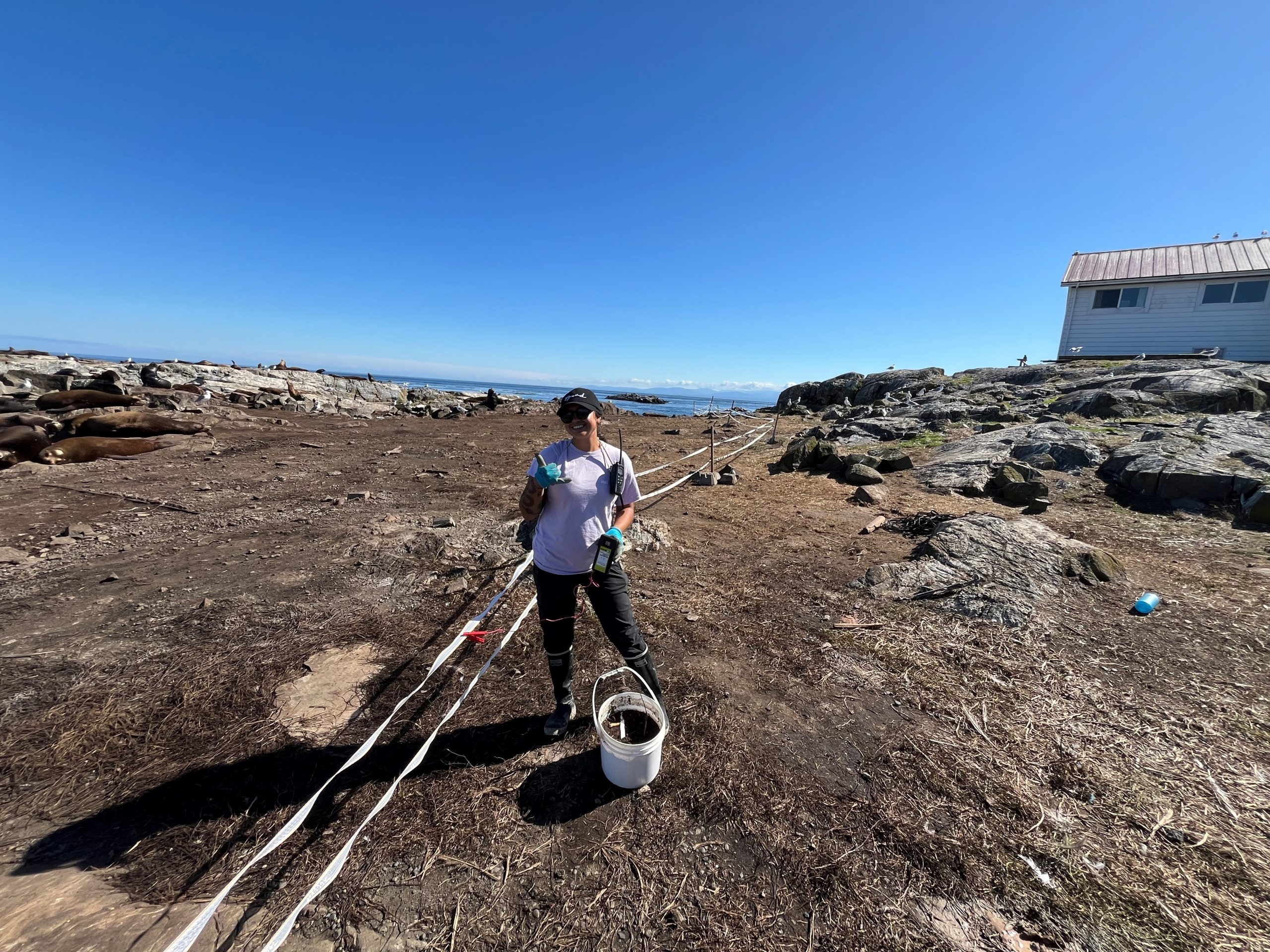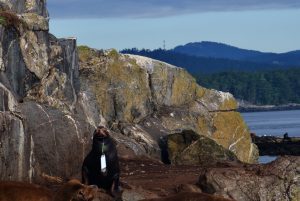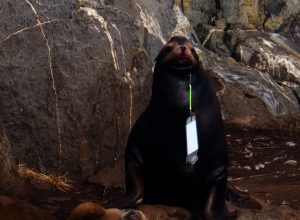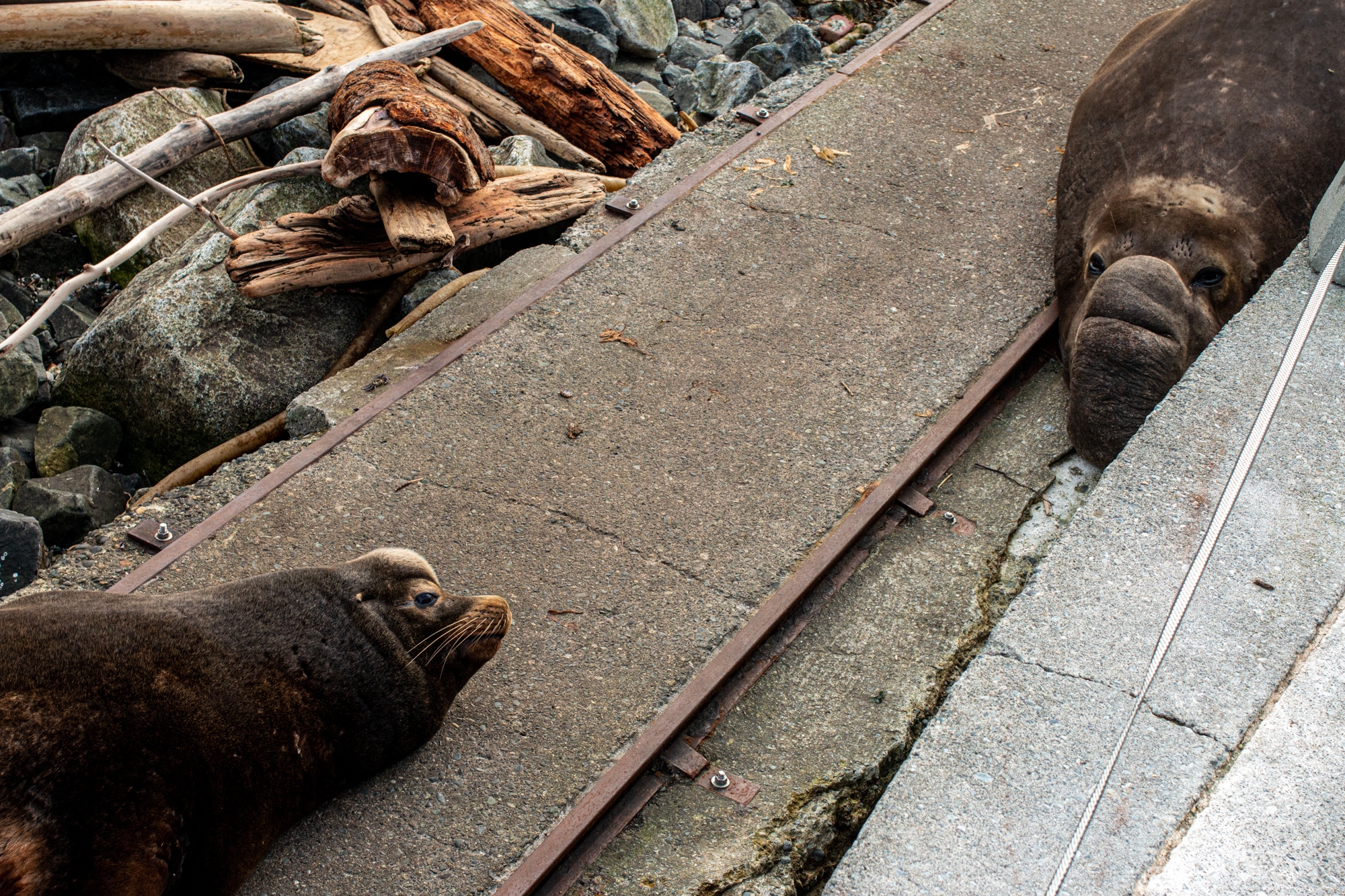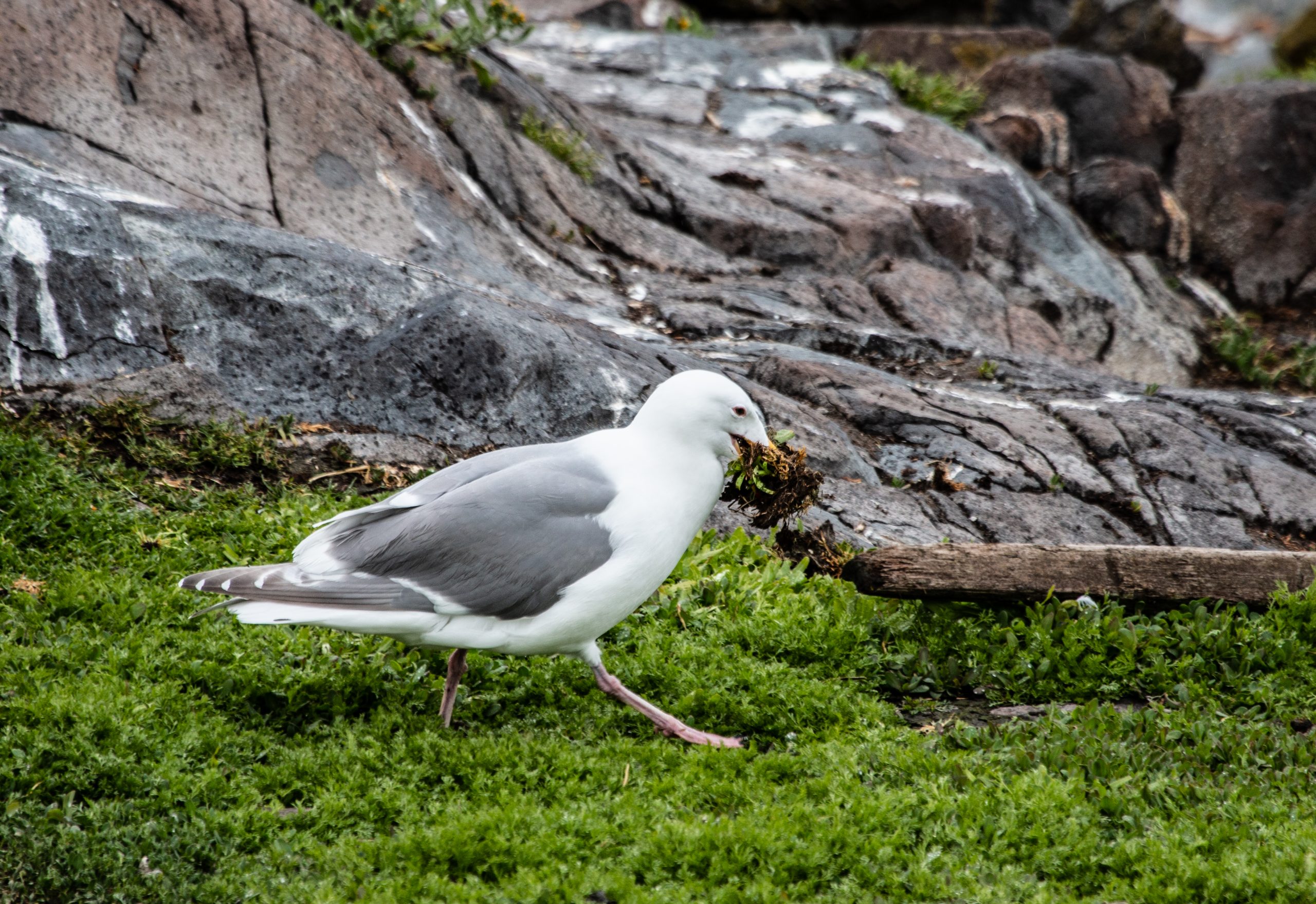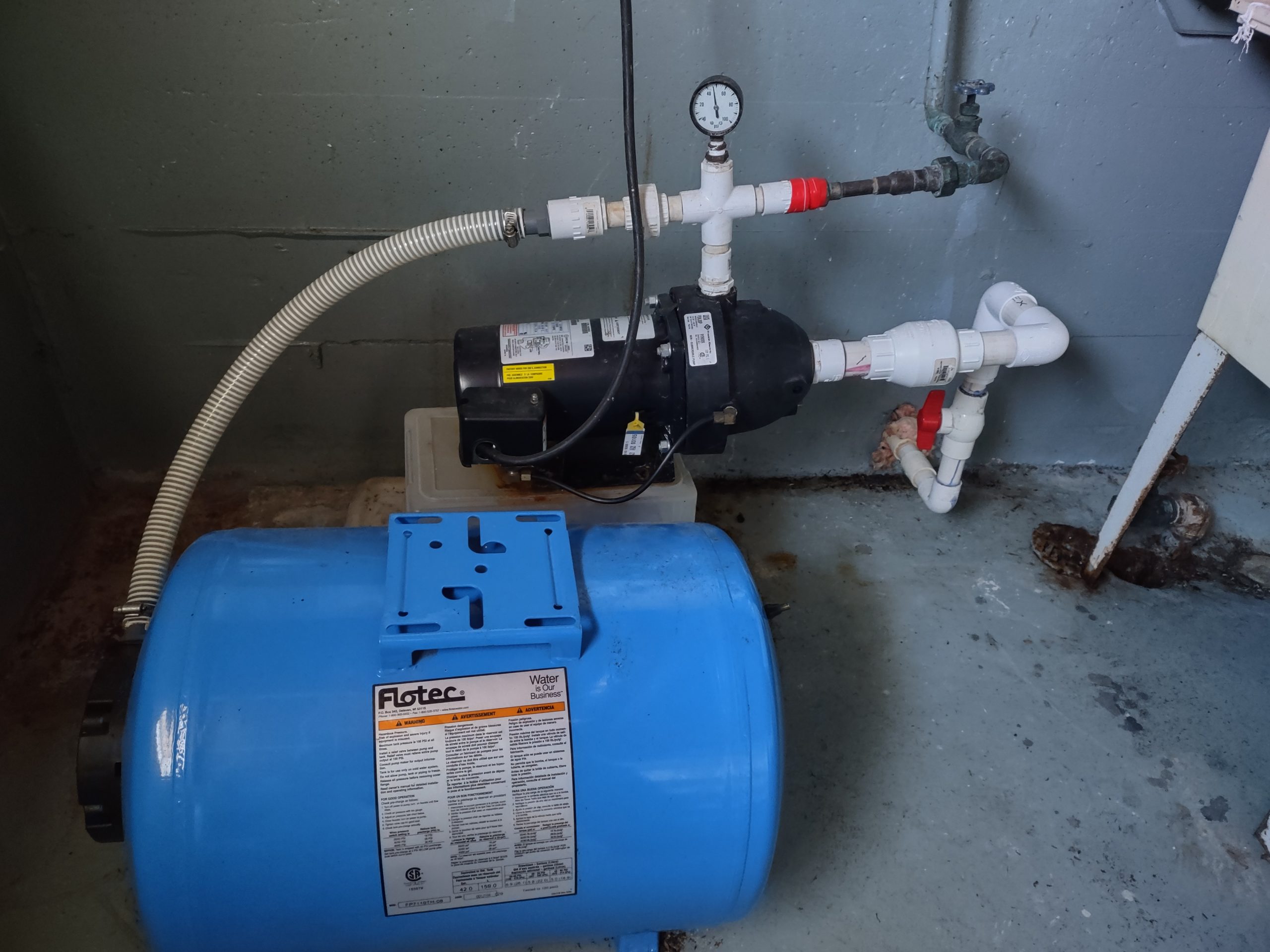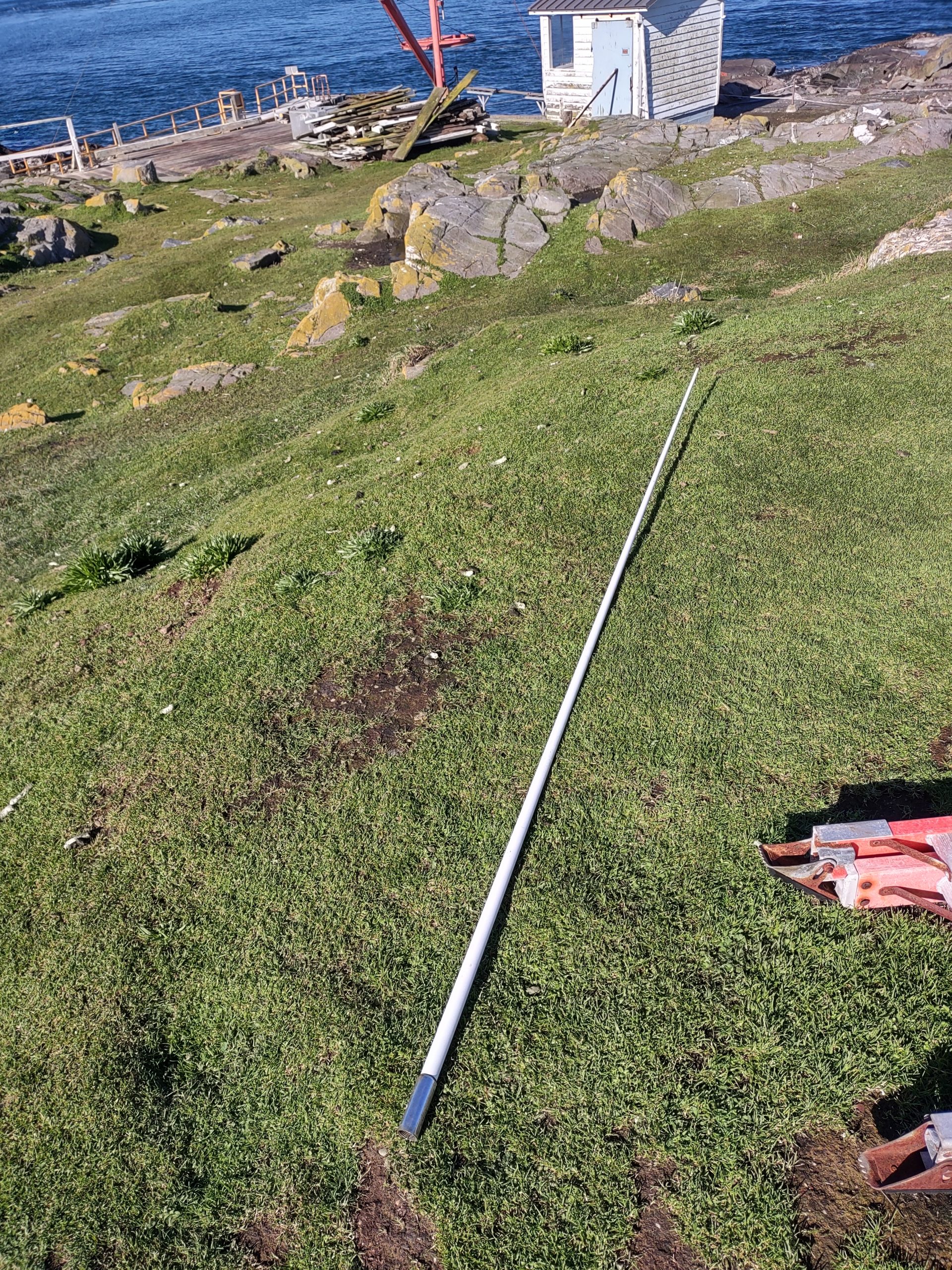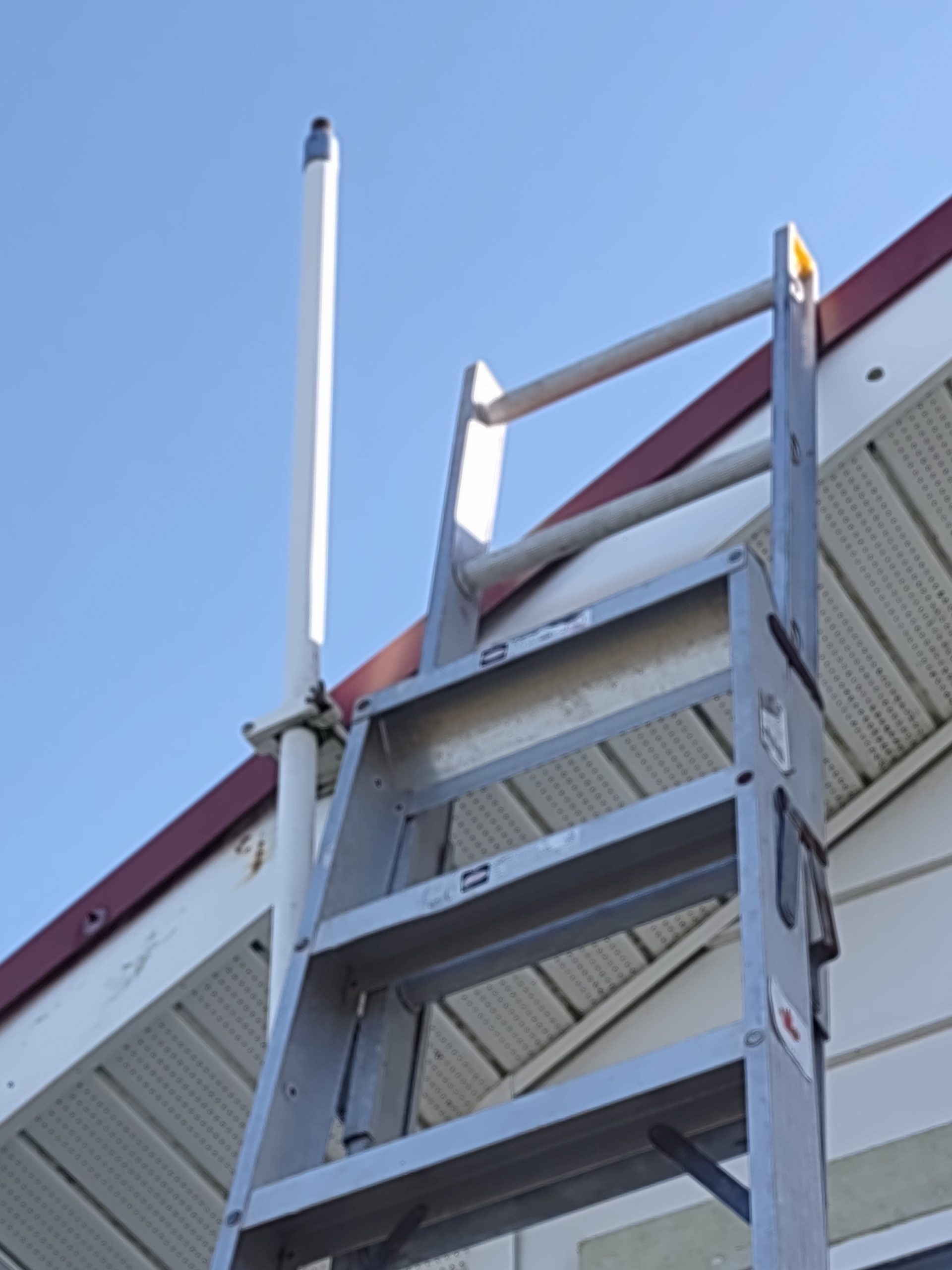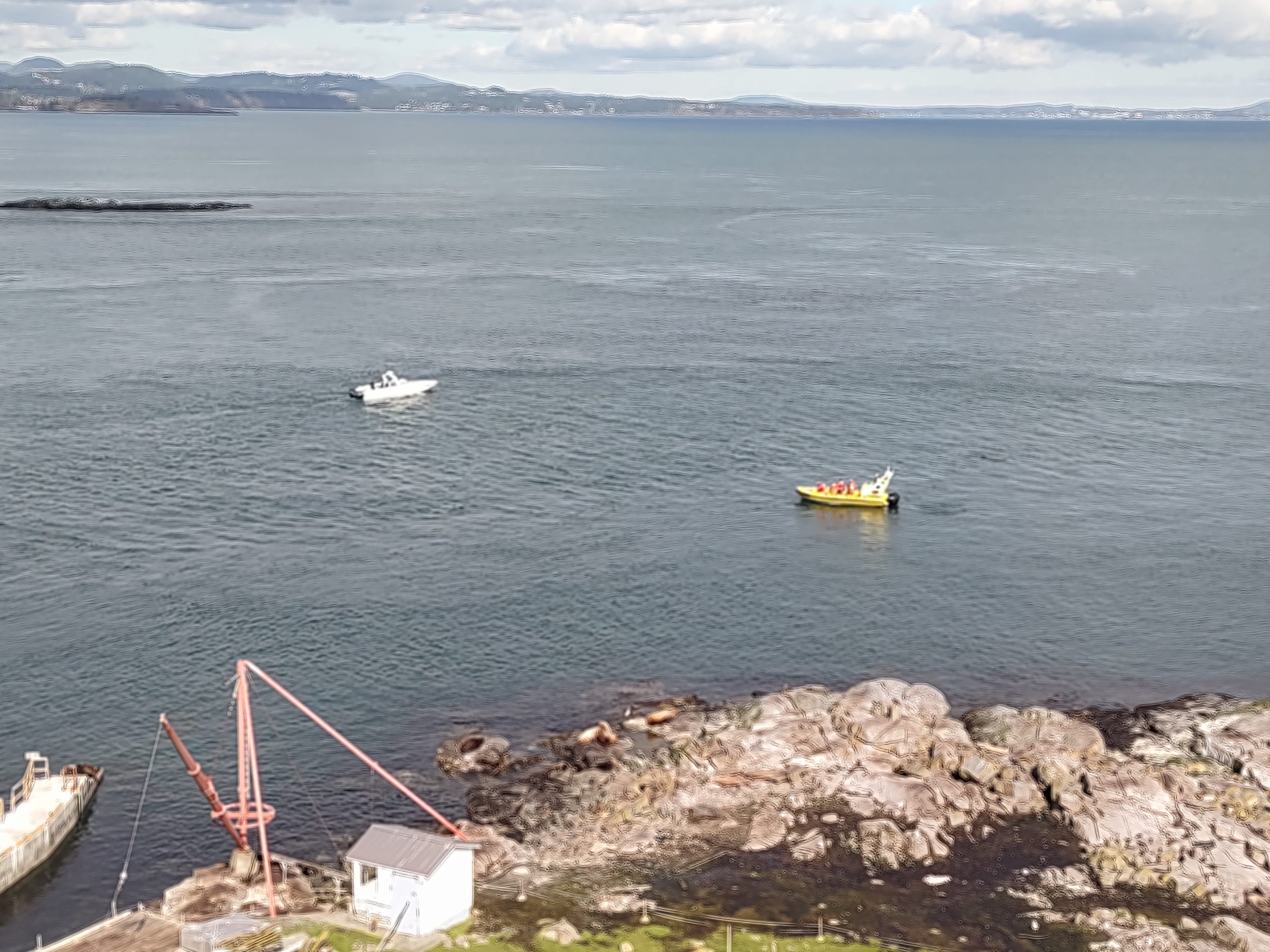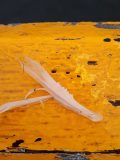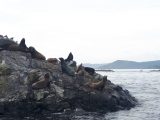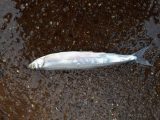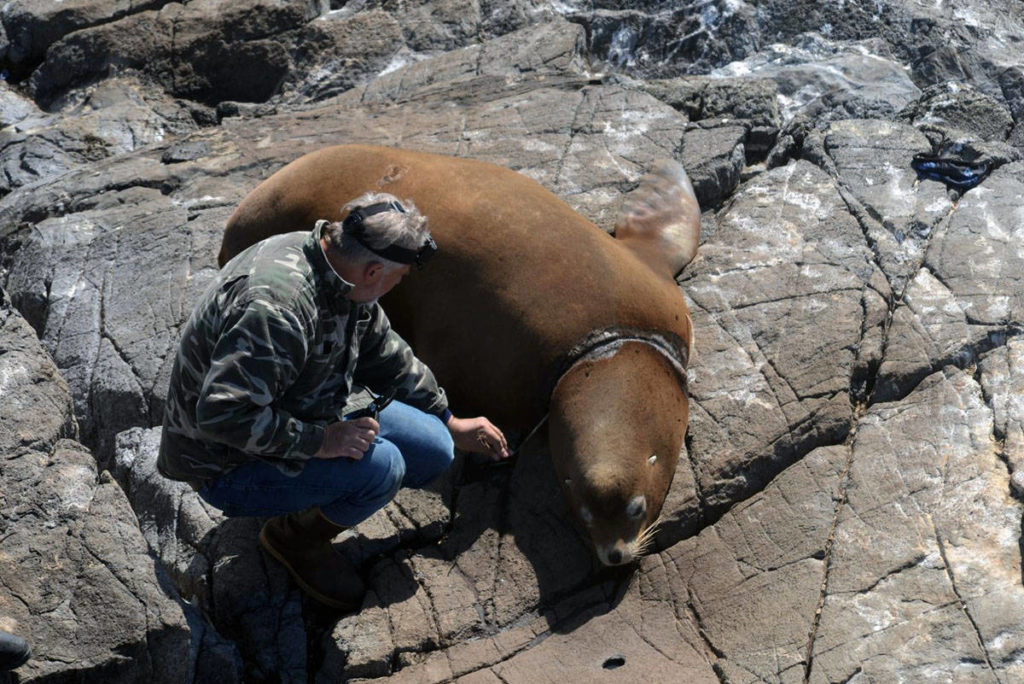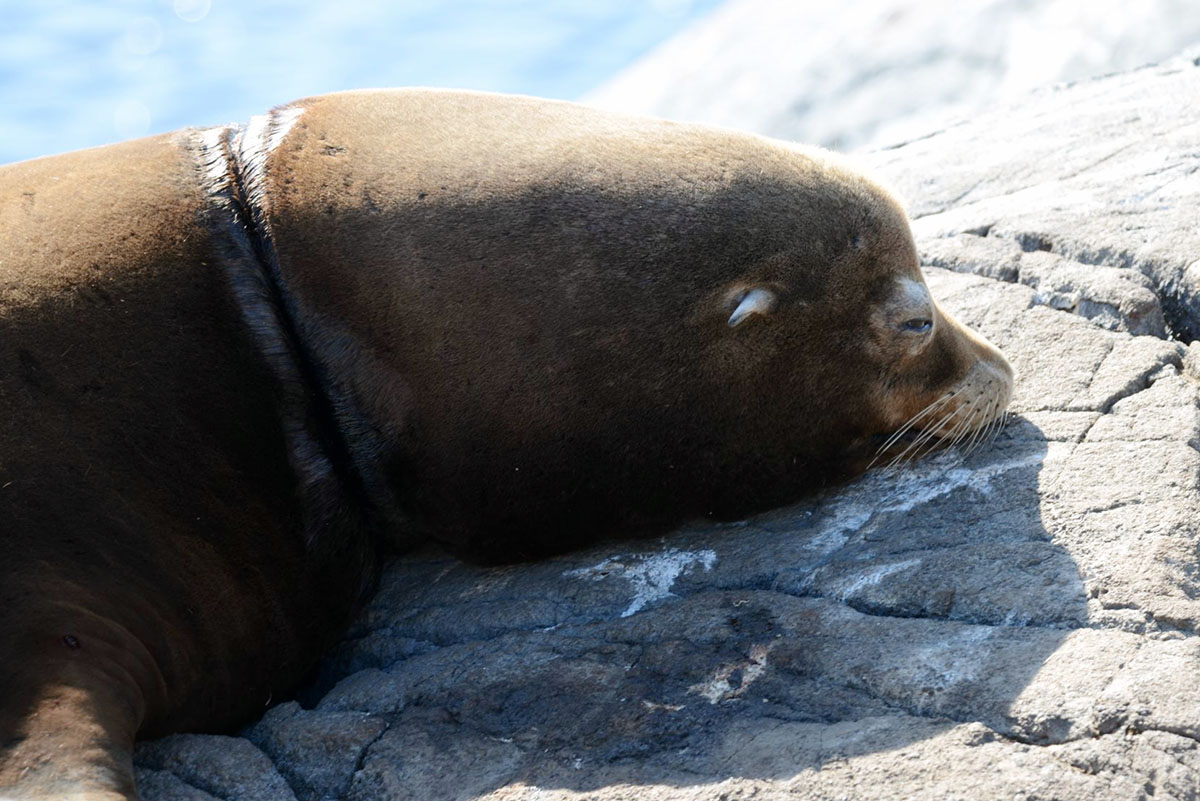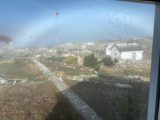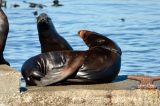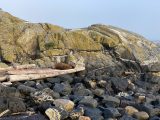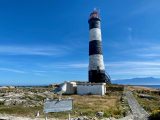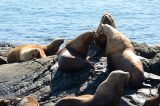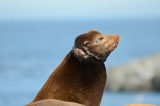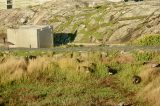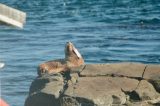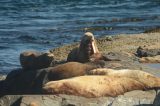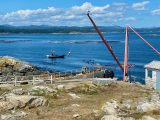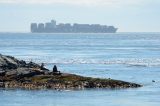I said there would be more disentanglement photos and information to come, and today is that day.
The following post contains photos of a severely entangled and wounded sea lion so this is your warning to skip this post if you don’t want to see it…but I hope you stay because it has a happy ending.
On Sunday, Oct 20th I spotted a California sea lion with one of the worst entanglements I’ve ever seen. With tears running down my face as I photographed it, I immediately reported it to Fisheries and Oceans Canada (DFO) and the Vancouver Aquarium Marine Mammal Rescue Society (VAMMR).
As I’ve mentioned before, sea lion disentanglements are tricky. You need the weather and tide to be calm, you need all teams to be available on the same day, and you need the entangled animal to stay put until that happens. Sometimes it takes weeks or even longer for this to happen.
This particular animal didn’t have weeks to wait. The monofilament gillnet was wound so tightly around his rostrum (muzzle) that he couldn’t eat. It was wrapped inside and around his mouth and embedded deeply in his neck. His poor body condition showed that he had been suffering from this entanglement for quite some time.
Within 48 hours of my initial sighting, a plan was in place. A team from VAMMR came out with two teams from DFO, as well as myself and Greg to help this sea lion. The weather was sunny and the ocean was glassy. Perfect conditions and in record timing. Best of all, our entangled lion was still on his rock.
Disentanglements can often be quick – a snip of a packing strap or fishing line, pull it off, tag it, and off they swim – but not this one. The rescue took 75 minutes from sedation to release. Once he was darted with a sedative he entered the water, requiring the teams to remove the entanglement from the boat – making it even harder. The netting was so tight that typical tools couldn’t be used and surgical scissors were required to cut it off.
- GoPro footage from VAMMR
- GoPro footage from VAMMR
- GoPro footage from VAMMR
I’ve worked in the marine mammal rescue field for over 6 years and this response truly left me at a loss for words. It was devastating, harrowing, and relieving all in one. Watching that sea lion swim off and haul out on a nearby rock was incredible and left everyone involved feeling like they were on cloud nine.
Since rescue, I’ve seen the sea lion almost every day on the south side of the main island and I’ve been able to watch him as he recovers. Each day he has been brighter and moved a little more, and yesterday was the first day in a week that I have not seen him. My hope is that he’s gone off to hunt now that he’s feeling better.
- Day of rescue
- Day 1 post rescue
- Day 2 post rescue
- Day 3 post rescue
- Day 4 post rescue
- Day 5 post rescue
I only have a few days left out here so I am crossing my fingers I get to see him one more time.
I am overjoyed with how this response came together and played out. The collaboration between VAMMR, DFO, Pearson College, and BC parks was unmatched and it was such a massive undertaking for this rescue to happen so quickly and it was truly life saving.
As for today…lots of outside tasks done today (none of which beats a disentanglement so I won’t bore you).
Facility Work:
- Fence repair
- Propane transfer/change out
- Algae removal on student house
- Washed windows
Weather:
- Sky: Blue sky and sunny
- Wind: Low of 1 knot, high of 6 knots
- Sea: Calm
- Temperature: Low 7•C, High 11•C
** All wildlife photos taken at the furthest distance possible, and may be cropped to improve detail! **


